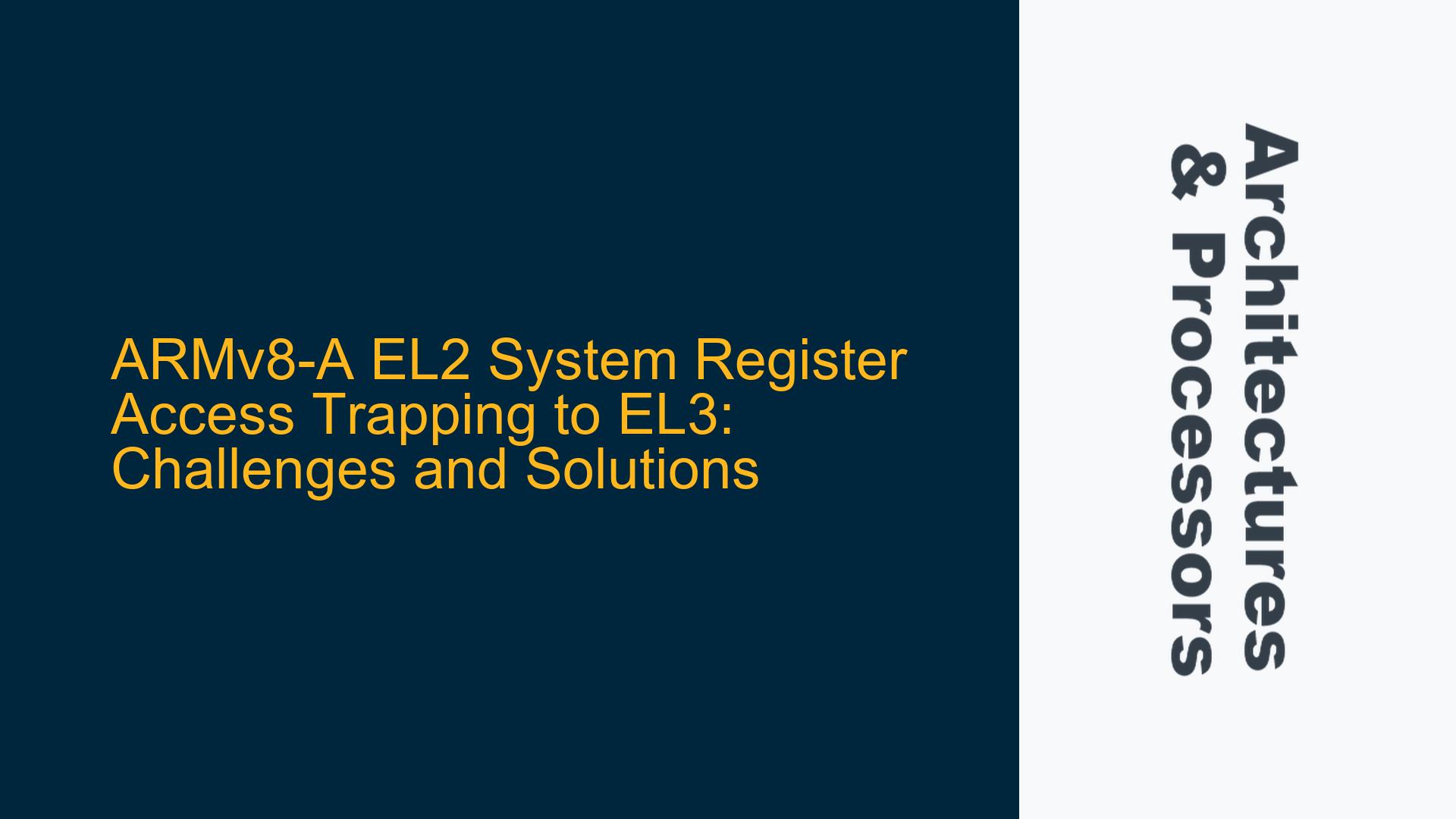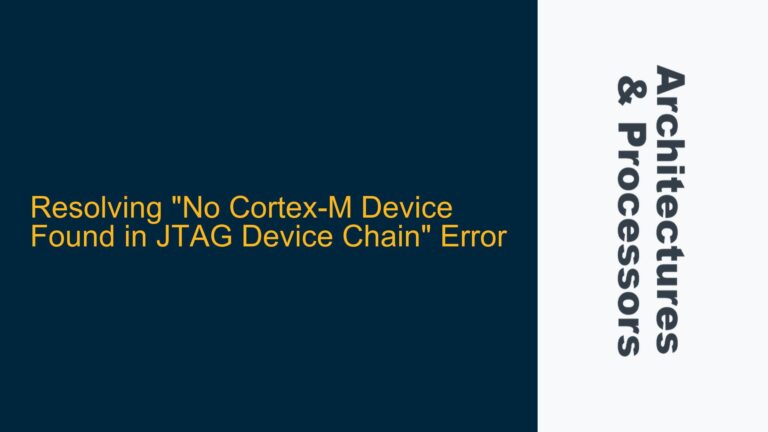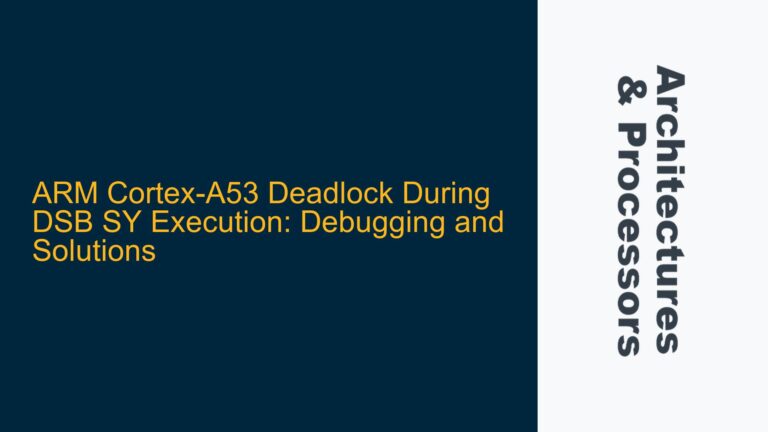ARMv8-A EL2 System Register Access Trapping to EL3: Architectural Limitations and Use Cases
In the ARMv8-A architecture, the Exception Levels (ELs) define the privilege and security levels at which software operates. EL3 is the highest privilege level, often referred to as the "secure monitor" level, responsible for managing transitions between the secure and non-secure states. EL2, on the other hand, is primarily used for virtualization, providing hypervisor functionality to manage virtual machines. The ARMv8-A architecture provides mechanisms to trap certain system register accesses from lower exception levels to higher ones, enabling monitoring and control over critical operations. However, the architecture does not natively support trapping accesses to EL2 system registers (such as TTBR0_EL2, VTTBR_EL2, and HCR_EL2) to EL3. This limitation poses challenges for developers who need to monitor or control these registers for security or debugging purposes.
The primary use case for trapping EL2 system register accesses to EL3 is to enforce security policies or debug complex virtualization scenarios. For example, a secure monitor running at EL3 might need to audit or restrict changes to the Translation Table Base Registers (TTBRs) at EL2 to prevent unauthorized modifications that could compromise the system’s security. Similarly, during development, trapping these accesses could help diagnose issues related to virtual memory management or hypervisor behavior.
The ARMv8-A architecture does provide mechanisms to trap accesses to EL1 system registers to EL2 using the Hypervisor Configuration Register (HCR_EL2). However, extending this functionality to trap EL2 system register accesses to EL3 is not straightforward. The architecture does not define equivalent control bits in the Secure Configuration Register (SCR_EL3) or other EL3 system registers to enable such trapping. This architectural gap necessitates alternative approaches to achieve the desired functionality.
Secure EL2 and ARMv8.2-A: Potential Architectural Enhancements
One potential avenue to address the limitation of trapping EL2 system register accesses to EL3 is to explore the enhancements introduced in the ARMv8.2-A architecture, specifically the introduction of Secure EL2. Secure EL2 extends the virtualization capabilities of ARMv8-A to the secure world, allowing a secure hypervisor to run in the secure state. This feature is particularly relevant for systems that require strong isolation between secure and non-secure virtual machines.
With Secure EL2, the architecture introduces new system registers and control bits that could potentially be leveraged to monitor or trap accesses to EL2 system registers. For example, the Virtualization Host Configuration Register (HCR_EL2) in the secure state might provide additional control over trapping mechanisms. However, even with these enhancements, the architecture does not explicitly support trapping EL2 system register accesses to EL3. Instead, Secure EL2 provides a separate execution environment within the secure state, which could be used to implement custom trapping logic.
It is important to note that Secure EL2 is an optional feature in the ARMv8.2-A architecture, and its availability depends on the specific implementation of the processor. Developers targeting systems with Secure EL2 should carefully review the processor’s technical reference manual to determine the available features and control mechanisms. Additionally, the use of Secure EL2 introduces additional complexity in the software stack, requiring careful design and implementation to ensure correct operation.
Implementing Custom Trapping Mechanisms for EL2 System Registers
Given the architectural limitations of ARMv8-A, developers who need to trap accesses to EL2 system registers to EL3 must implement custom mechanisms to achieve this functionality. One approach is to use a combination of exception handling and manual checks to monitor and control accesses to these registers. This section outlines a potential solution that leverages the existing architectural features to implement custom trapping mechanisms.
The first step in implementing custom trapping mechanisms is to configure the system to generate an exception whenever an attempt is made to access the target EL2 system registers. This can be achieved by setting up the appropriate control bits in the system registers at EL2 and EL3. For example, the Hypervisor Configuration Register (HCR_EL2) can be configured to trap certain system register accesses to EL2. However, since the architecture does not provide direct support for trapping these accesses to EL3, the exception handler at EL2 must be designed to forward the exception to EL3.
Once the exception is forwarded to EL3, the secure monitor can inspect the context of the exception to determine the nature of the access. This includes examining the system register being accessed, the type of access (read or write), and the value being written (if applicable). Based on this information, the secure monitor can enforce the desired security policies or debugging checks. For example, if an unauthorized attempt is made to modify the Translation Table Base Register (TTBR0_EL2), the secure monitor can log the event and either allow or deny the operation based on the configured policies.
To implement this solution, developers must carefully design the exception handling logic at both EL2 and EL3. This includes defining the control flow between the exception handlers, ensuring that the context is correctly preserved and restored, and implementing the necessary checks and policies. Additionally, developers must consider the performance implications of this approach, as frequent exceptions and context switches can introduce overhead that may impact the system’s overall performance.
Another consideration is the potential for race conditions or other synchronization issues when multiple cores attempt to access the same system registers concurrently. To address this, developers may need to implement additional synchronization mechanisms, such as spinlocks or atomic operations, to ensure that the custom trapping logic operates correctly in a multi-core environment.
In summary, while the ARMv8-A architecture does not natively support trapping accesses to EL2 system registers to EL3, developers can implement custom mechanisms to achieve this functionality. This requires a deep understanding of the architecture’s exception handling and system register control mechanisms, as well as careful design and implementation to ensure correct and efficient operation. By leveraging the existing architectural features and introducing custom logic, developers can extend the capabilities of the ARMv8-A architecture to meet their specific requirements.






